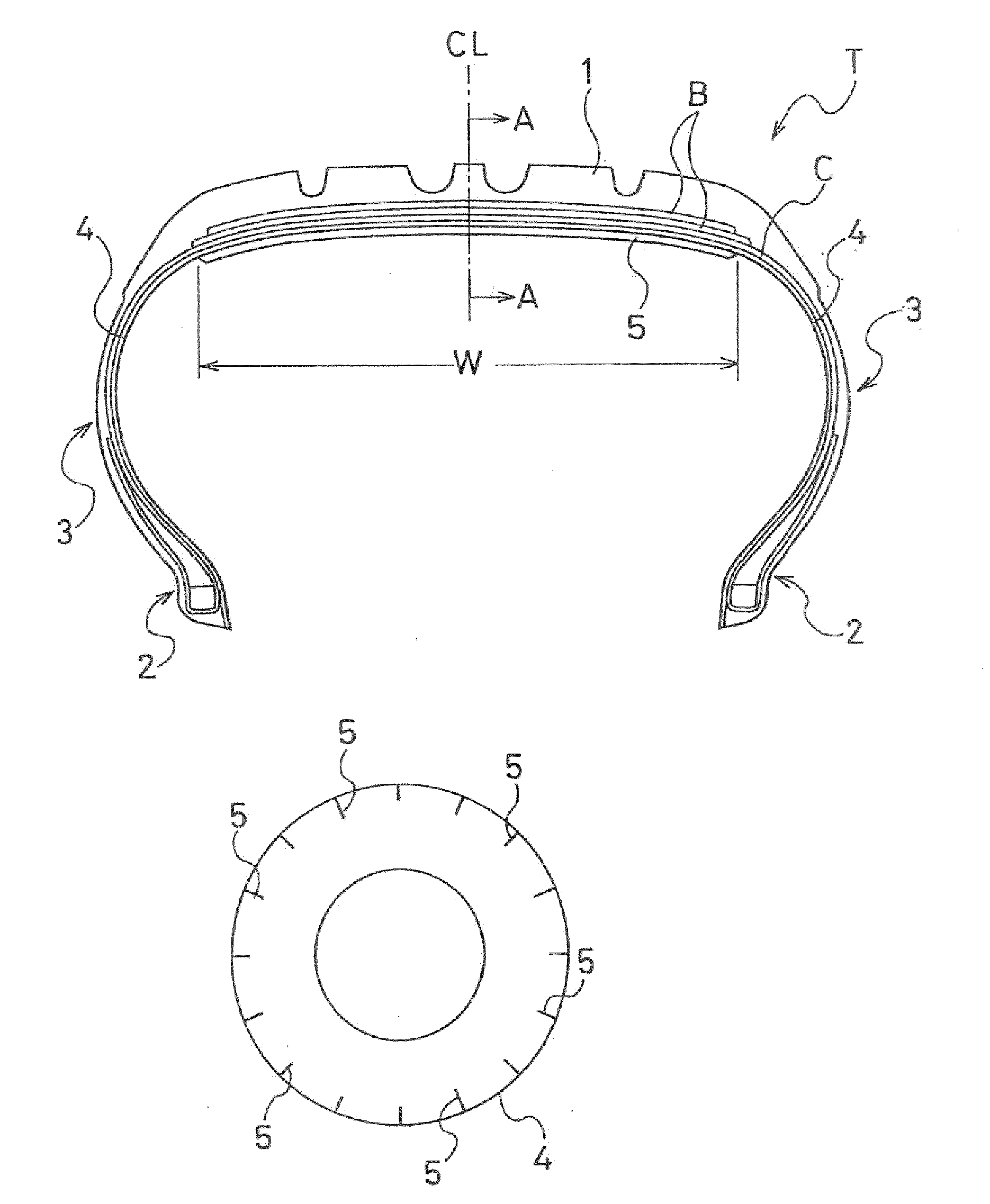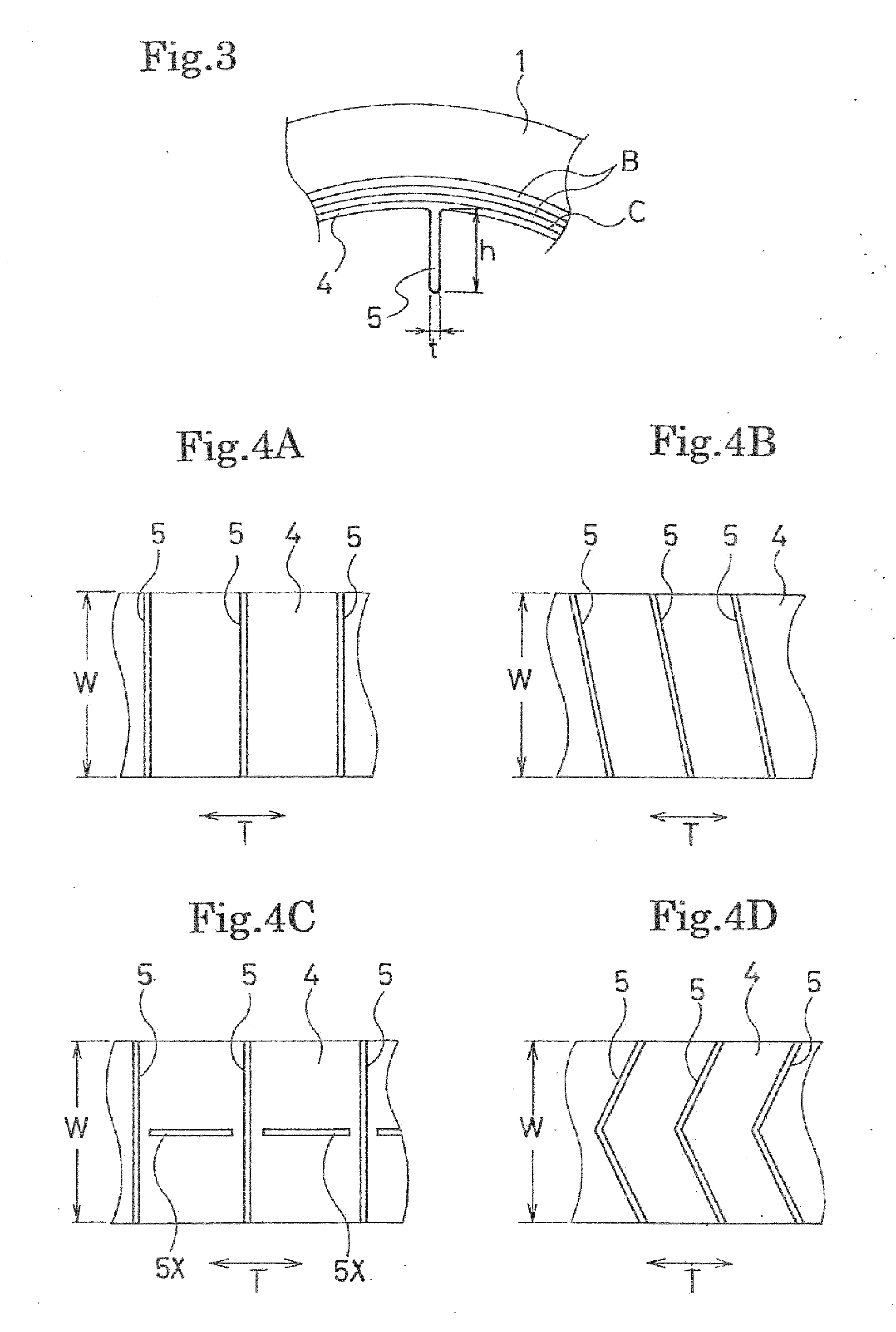Low-noise pneumatic tire
a pneumatic tire and low-noise technology, applied in the direction of tyres, vehicle components, without separate inflatable inserts, etc., can solve the problems of tire noise, repeated deformation of partition plates, air inside the tires to resonate, etc., and achieve the effect of further reducing the noise in the vehicle compartmen
- Summary
- Abstract
- Description
- Claims
- Application Information
AI Technical Summary
Benefits of technology
Problems solved by technology
Method used
Image
Examples
examples
[0066]Tires of the present invention (Examples 1, 2), comparative tires (Comparative Examples 1, 2) and a conventional tire (Conventional Example) were prepared, each tire having a tire size of 215 / 55R17. In the conventional tire (Conventional Example), no convex portions were formed on a tire inner wall surface. In each tire of Examples and Comparative Examples, convex portions were formed at equal intervals on a tire circumference, at 24 spots of a region indicated by W extending across a tire inner wall surface as shown in FIG. 1. The tires of Examples and Comparative Examples differ from one another in specification of the convex portions (arrangements, the number of types of protruding heights, and protruding heights) as shown in Table 1.
[0067]Note that the tires of the present invention and the comparative tires included the convex portions each having a thickness t of 300 μm. In each tire of the present invention, among the 24 convex portions, groups each consisting of eight ...
PUM
 Login to View More
Login to View More Abstract
Description
Claims
Application Information
 Login to View More
Login to View More - R&D
- Intellectual Property
- Life Sciences
- Materials
- Tech Scout
- Unparalleled Data Quality
- Higher Quality Content
- 60% Fewer Hallucinations
Browse by: Latest US Patents, China's latest patents, Technical Efficacy Thesaurus, Application Domain, Technology Topic, Popular Technical Reports.
© 2025 PatSnap. All rights reserved.Legal|Privacy policy|Modern Slavery Act Transparency Statement|Sitemap|About US| Contact US: help@patsnap.com



